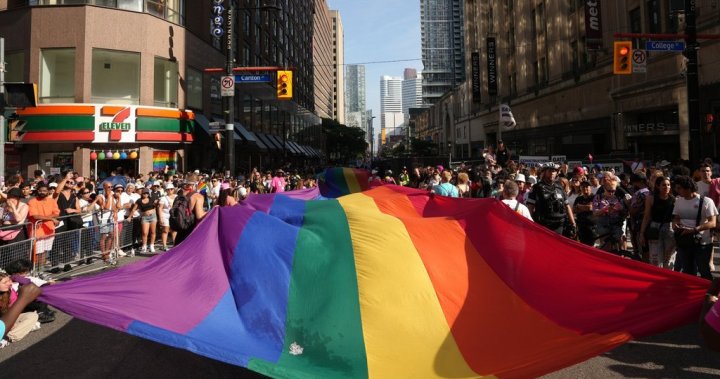The streets of Toronto will be filled with rainbows as the annual Pride parade winds through the city, but there’s a cloud hanging over future festivities.
Sunday’s event will see more than 25,000 marchers from some 250 groups make their way from the Rosedale neighbourhood through the downtown core to Nathan Phillips Square.
The parade will serve as Canada’s biggest show of solidarity with the LGBTQ+ community this year. It’s been an annual, summer fixture in Toronto since 1981, when the first Pride parade was born out of protests linked to the city’s bathhouse raids.
Since then, it has grown steadily in scope and prominence, blossoming into a full month of activities that draw people to the Church-Wellesley area, which is known as the gay village.
However, the parade remains the buzziest and most vibrant of the Pride month spectacles thanks to the colourful outfits, pulsing beats, fierce dance moves and sense of community it delivers.
But that status has come under threat.
In the lead up to this year’s parade, Pride Toronto executive director Kojo Modeste warned next year’s Pride will likely be scaled down if organizers can’t drum up more financial support.

Get breaking National news
For news impacting Canada and around the world, sign up for breaking news alerts delivered directly to you when they happen.
“One hundred per cent, Pride will look a lot smaller,” Modeste said in mid-June. “We would not have the same impact, both financially and culturally, that we normally do.”
Earlier this year, Modeste revealed organizers were facing a $900,000 funding gap.
The loss of cash was blamed on rising costs and the departure of sponsors Google, Nissan, Home Depot and Clorox.
Modeste attributed the pullback to backlash against diversity, equity and inclusion efforts that materialized in the U.S. and beyond under President Donald Trump.
In the wake of the pullback, others stepped up. Some 175 people have donated close to $10,000, Pride Toronto has said.
The city also named the organization a multi-year recipient of cash through a festival funding program, which hands out $350,000.
Modeste has said this funding is “going to go a long way,” but doesn’t eliminate the need for other levels of government to pitch in.
“What we need to see is the province and the federal government taking lead from the city and following up and also providing some support,” said Modeste.
—With files from Vanessa Tiberio
© 2025 The Canadian Press


